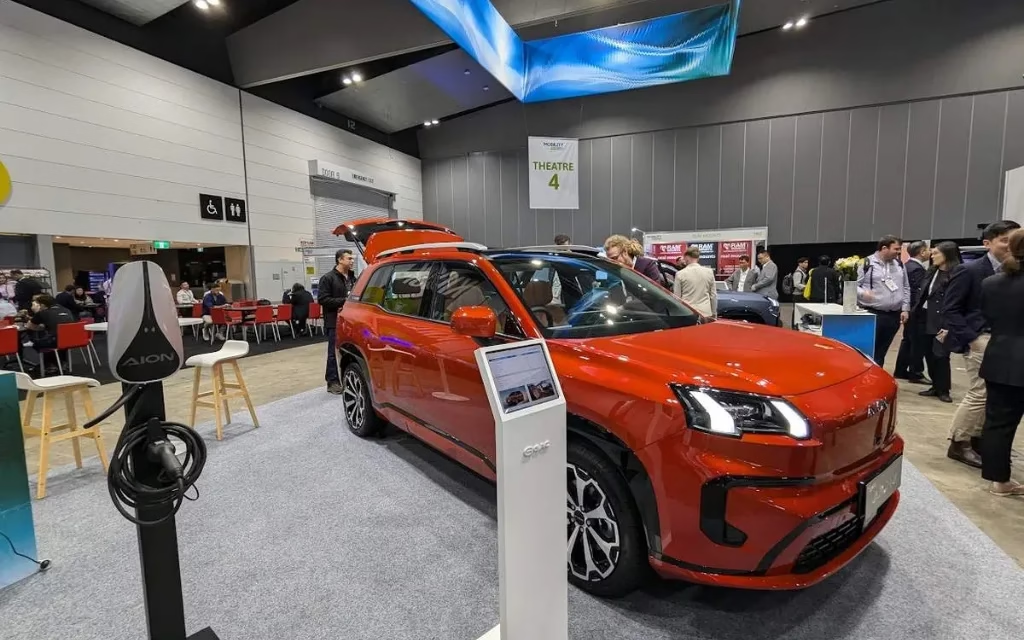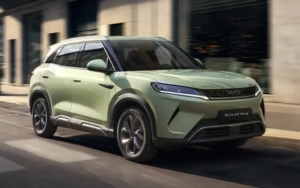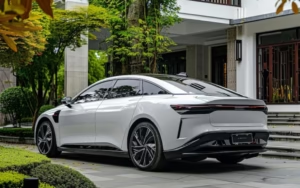The Aion UT electric hatchback has been making waves in Asia, and now it’s in Australia. The small electric vehicle was recently seen in Sydney, and it might serve as the next important step for practical electric transportation in Australia. The hatchback was made by GAC, which is one of China’s fastest-growing car companies. It promises a good blend of range, utility, and value, which has already caught the attention of those outside of China. It could add much-needed variety to a market where the MG4, the BYD Dolphin, as well as GWM Ora are the most popular cars.
But the UT’s story is much wider than just seeing a pink test car. It shows that GAC wants to get a foothold in Australia, an industry that is becoming more open to EVs but is still unsure about price as well as infrastructure. The car also shows how the world is moving toward smaller, city-friendly electric vehicles, which is very different from how other brands are focusing on SUVs.
In this article, we look at 7 important things in regards to Aion UT electric hatchback, including its design, efficiency, technology, impact on the market, and what it suggests for Australian customers.
Aion UT electric hatchback design and first impressions
The Aion UT electric hatchback’s clean, modern look was the first thing that jumped out when it was seen in Sydney. The UT came out in full color, unlike many road tests that were covered in camouflage. This showed off its current design characteristics. The front has unique headlights as well as a sloping snout, while the curving rear hatch provides it a sporty but friendly look.
The car is little under 4.3 meters long, which puts it solidly in the tiny EV category. since of its size, it naturally competes with the MG4, the GWM Ora, as well as BYD Dolphin, every one of which have sold well since they are easy to drive in cities. The UT looks sleek and stylish, but it’s also practical. Its proportions make it easy to drive in the city without sacrificing comfort inside.
The cabin inside shows GAC’s minimalist design style. There are two screens on the dashboard: a big 14.6-inch infotainment screen as well as a small 8.8-inch driver screen behind your steering wheel. The layout is straightforward and clean, which makes it less distracting and more appealing to drivers who desire functionality over flashiness.
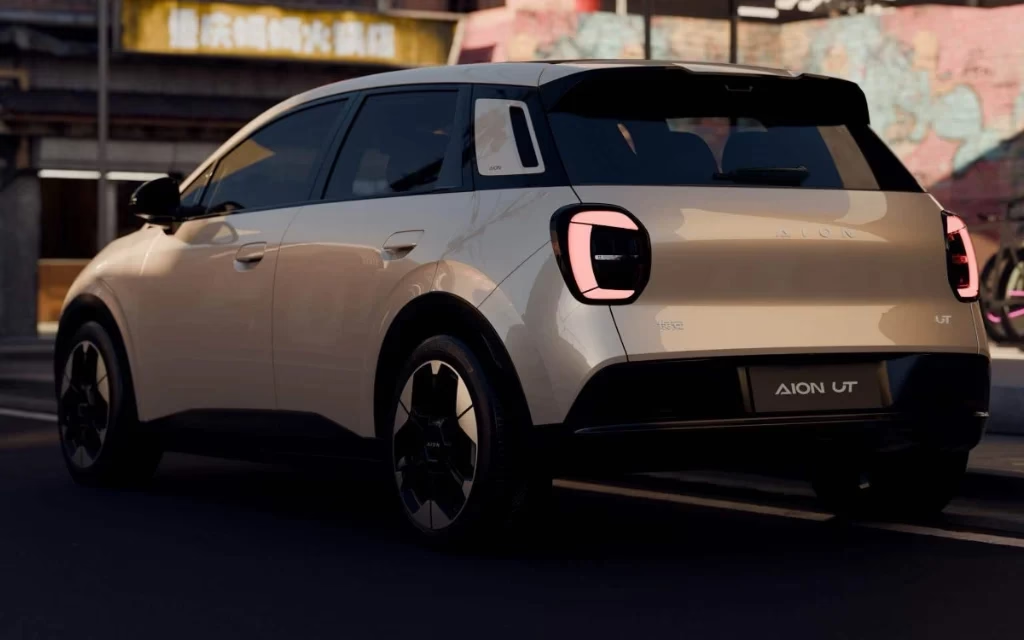
Aion UT electric hatchback performance and range
The appeal of the Aion UT hatchback comes from its mix of performance and range. The Australian model is expected to carry a 100 kW motor that can reach about 150 km/h. In other markets such as Thailand, GAC has already introduced a stronger 150 kW option. This points to the possibility of buyers getting a variety of choices depending on their preferences and driving needs.
The car’s battery pack is also interesting. The UT has a lithium- iron phosphate (LFP) batteries with a capacity of 60 kWh that can last up to 500 km within the NEDC cycle. When you change it to the extra realistic WLTP standard, it comes out to about 400 km, which is better than some of its competitors in this market. This series finds a good compromise between affordability and capabilities for people who mainly drive in cities but sometimes take longer trips from time to time.
There’s also a more basic 50 kWh version, which delivers a WLTP range of around 330 km. If GAC aims to keep prices more affordable, this could serve as the entry-level model. With these choices, the UT appeals both to budget-conscious drivers and to those who want extra flexibility for weekend trips or regional travel.
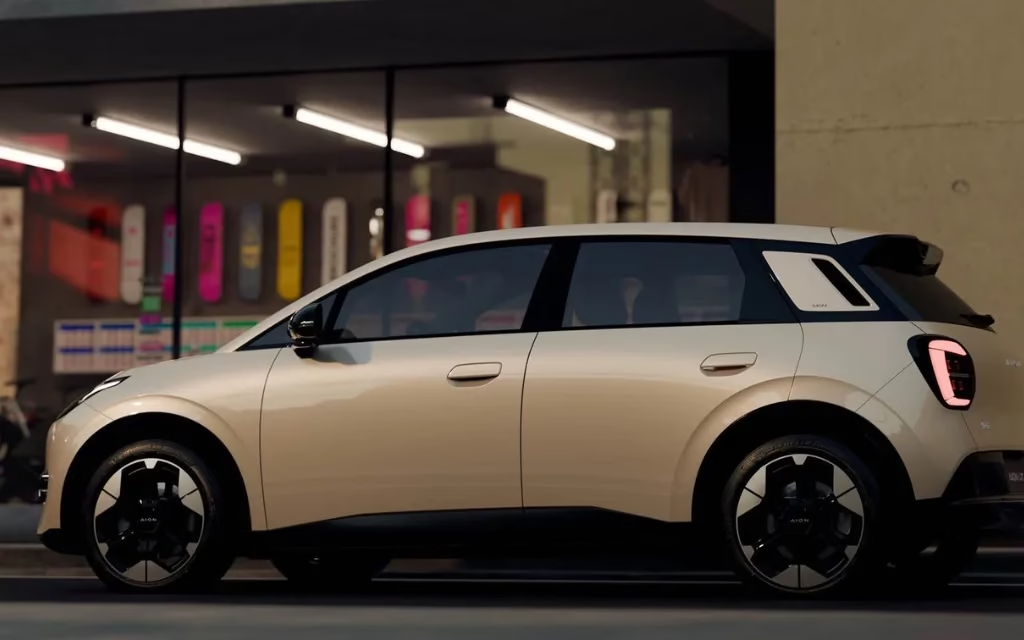
Aion UT electric hatchback market positioning in Australia
The market for electric vehicles in Australia is changing. Even if more people are buying them, the price is still one of the largest problems for many. That’s when the Aion UT electric hatchback may really make a difference.
The Premium model of the UT costs less than $31,000 AUD in Thailand. If GAC can provide similar prices in the country, the UT might beat established competitors like the MG4 as well as BYD Dolphin by offering similar—if not better—range and features.
Compact electric vehicles that are both affordable and high-performing have done quite well in the Australian market. For instance, the MG4 has sold a lot because it is reasonably priced and useful. The UT would blend in well with this area, appealing to city dwellers who want an electric car that doesn’t feel too big or complicated.

Aion UT electric hatchback technology and user experience
More and more, technology is what makes people buy EV’s. The Aion UT electric hatchback was made with this in mind. The 14.6-inch touchscreen is the main feature. It combines navigation, entertainment, as well as vehicle controls. The device has voice control, so drivers can talk to the car without removing their eyes off the road.
Safety is expected to be one of the main highlights of the UT. While GAC hasn’t yet revealed full details for the Australian release, the models sold in China and Thailand already feature adaptive cruise control, lane-keeping assist, and other driver-assistance systems. In today’s compact EV market, these aren’t just nice-to-have extras—they’ve become standard expectations. The UT looks well-prepared to deliver on that front.
The UT’s right-hand-drive configuration is another interesting thing about it. The test car seen in Sydney was definitely made for Australian roads, which shows that GAC is dedicated about getting into the local market. This isn’t simply a gesture; the corporation looks like it really wants to make a difference in Australia.
Aion UT electric hatchback global rollout and strategy
The Aion UT electric hatchback can be more than just a car for Australia; it’s part of GAC’s plan for electric vehicles around the world. The Guangzhou International Auto Exhibition in 2024 was the first place anyone saw the automobile. By the start of 2025, it was already on sale in China. Thailand came next, with shipments starting in the second quarter of 2025.
GAC plans to test several international markets before increasing manufacturing, which is why this rollout is staggered. The timing couldn’t be better for Australia. There is an obvious opportunity for new companies to get customers because EV sales currently make up about 10% of new car sales and government subsidies help lower costs.
GAC has additionally suggested that Australia may get a wider range of cars, including the bigger Aion V SUV. But the UT’s small size and competitive selection make it a good place to start building brand recognition.
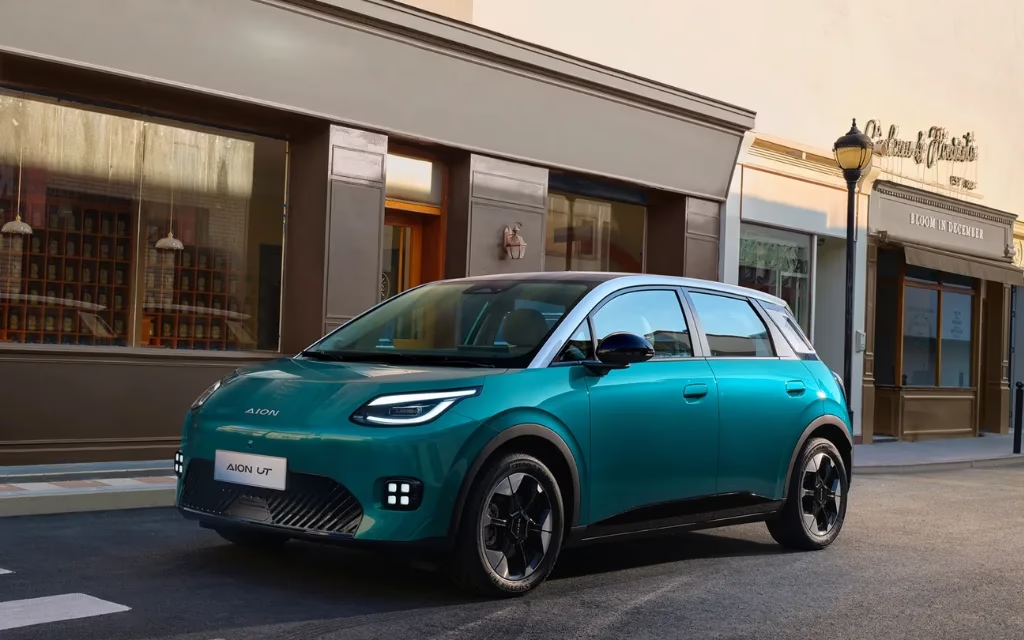
Aion UT electric hatchback versus rivals
The way Aion UT electric hatchback stack up against its top competitors?
- MG4: The previously MG4 has been the standard for cheap EVs in Australia, and it offers great value. The UT, on the other hand, has a range that is equal to or greater than its own, and it promises a new design and possibly lower prices.
- BYD Dolphin: The BYD Dolphin is a great competitor because of its high-quality interior and technology. For people who need to use it, the UT’s extended reach might provide it an edge.
- GWM Ora: The previously Ora has a retro look that some people like and others don’t. People who want something more modern might like the UT’s simple, sleek style.
The UT is the smart, well-rounded choice in this area. It’s a hatchback that combines range, price, and usability without going too far into specific styling.
Aion UT electric hatchback and the Australian EV landscape
Australia is adopting electric vehicles (EVs) faster than ever before, and the Aion UT electric hatchback is coming at the perfect time. The infrastructure for public charging is growing, there are state incentives, and people’s attitudes are changing.
But there are still some problems. A lot of Australians are still worried about distance fear, charging speeds, as well as resale value of the car. GAC can directly address these issues by giving customers a car with a real-world range of 400 km, low prices, and easy-to-use technologies.
The hatchback shape is also essential. Not everyone wants an SUV, and the UT is a small car that works well in cities and is also useful for families.
Conclusion: Why the Aion UT electric hatchback matters
The Aion UT hatchback is shaping up to be more than just another electric vehicle arriving in Australian car market. It represents fresh possibilities and more affordable options in a market that has long lacked smaller EV choices. With its modern design, practical range, and expected competitive pricing, the UT has the potential to shake up the industry and challenge established rivals.
In other words, Australians are seeing the EV era grow beyond expensive cars and large SUVs. The new wave is centered on reliable, everyday vehicles designed to handle city commutes as well as family responsibilities.
FAQs on the Aion UT electric hatchback
1. When will the Aion UT electric hatchback launch in Australia?
The UT has been spotted testing locally, suggesting a launch could happen within the next 12 months.
2. What is the expected range of the Aion UT electric hatchback?
The 60 kWh model offers around 400 km WLTP range, while a smaller 50 kWh version provides about 330 km.
3. How much will the Aion UT electric hatchback cost in Australia?
While official pricing is unconfirmed, Thai pricing suggests it could start under $31,000 AUD, making it highly competitive.
4. Who are the main competitors of the Aion UT electric hatchback?
The main rivals include the MG4, BYD Dolphin, and GWM Ora in the compact EV segment.
5. Is the Aion UT electric hatchback suitable for families?
Yes, with five seats, ample boot space, and advanced safety features, it is designed to suit small families as well as individual buyers.

